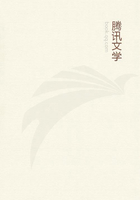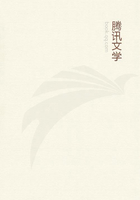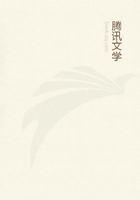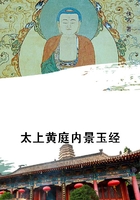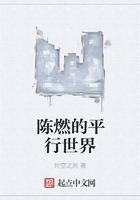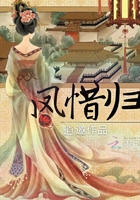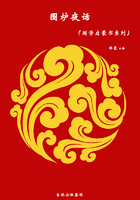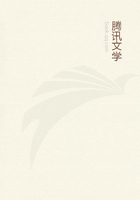ANOMALOUS NERVOUS AND MENTAL DISEASES.
Epilepsy has been professionally recognized as a distinct type of disease since the time of Hippocrates, but in earlier times, and popularly throughout later times, it was illy defined. The knowledge of the clinical symptoms has become definite only since the era of cerebral local anatomy and localization. Examination of the older records of epilepsy shows curious forms recorded.
The Ephemerides speaks of epilepsy manifested only on the birthday. Testa mentions epilepsy recurring at the festival of St. John, and Bartholinus reports a case in which the convulsions corresponded with the moon's phases. Paullini describes epilepsy which occurred during the blowing of wind from the south, and also speaks of epilepsy during the paroxysms of which the individual barked. Fabricius and the Ephemerides record dancing epilepsy. Bartholinus and Hagendorn mention cases during which various splendors appeared before the eyes during the paroxysm.
Godart Portius, and Salmuth speak of visions occurring before and after epileptic paroxysms. The Ephemerides contains records of epilepsy in which blindness preceded the paroxysm, in which there was singing during it, and a case in which the paroxysm was attended with singultus. Various older writers mention cases of epilepsy in which curious spots appeared on the face; and the kinds of aura mentioned are too numerous to transcribe.
Baly mentions a case of epilepsy occasioned by irritation in the socket of a tooth. Webber reports a case of epilepsy due to phimosis and to irritation from a tooth. Beardsley speaks of an attempt at strangulation that produced epilepsy. Brown-Sequard records an instance produced by injury to the sciatic nerve.
Doyle gives an account of the production of epilepsy from protracted bathing in a pond. Duncan cites an instance of epilepsy connected with vesical calculus that was cured by lithotomy. Museroft mentions an analogous case. Greenhow speaks of epilepsy arising from an injury to the thumb. Garmannus, early in the eighteenth century, describes epilepsy arising from fright and terror. Bristowe in 1880, and Farre speak of similar instances. In Farre's case the disease was temporarily cured by an attack of acute rheumatism. Thorington of Philadelphia has seen a paroxysm of epilepsy induced by the instillation of atropia in the eye of a child nearly cured of the malady. It was supposed that the child was terrified on awakening and finding its vision suddenly diminished, and that the convulsions were directly due to the emotional disturbance. Orwin describes epilepsy from prolonged lactation, and instances of ovarian and uterine epilepsy are quite common.
There is a peculiar case of running epilepsy recorded. The patient was a workman who would be suddenly seized with a paroxysm, and unconsciously run some distance at full speed. On one occasion he ran from Peterborough to Whittlesey, where he was stopped and brought back. Once he ran into a pit containing six feet of water, from which he was rescued. Yeo says that sexual intercourse occasionally induces epilepsy, and relates a case in which a severe epileptic fit terminated fatally three days after the seizure, which occurred on the nuptial night.
Drake reports the case of a man who was wounded in the War of 1812, near Baltimore, the ball passing along the left ear and temple so close as to graze the skin. Eighteen years after the accident he suffered with pain in the left ear and temple, accompanied by epileptic fits and partial amnesia, together with an entire loss of power of remembering proper names and applying them to the objects to which they belonged. He would, for instance, invariably write Kentucky for Louisville. Beirne records the case of a dangerous lunatic, an epileptic, who was attacked by a fellow-inmate and sustained an extensive fracture of the right parietal bone, with great hemorrhage, followed by coma. Strange to say, after the accident he recovered his intellect, and was cured of his epileptic attacks, but for six years he was a paralytic from the hips down.
The Dancing Mania.--Chorea has appeared in various epidemic forms under the names of St. Vitus's dance, St. Guy's dance, St.
Anthony's dance, choromania, tanzplage, orchestromania, dance of St. Modesti or St. John, the dancing mania, etc.; although these various functional phenomena of the nervous system have been called chorea, they bear very little resemblance to what, at the present day, is called by this name. The epidemic form appeared about 1374, although Hecker claims that, at that time, it was no new thing. Assemblages of men and women were seen at Aix-la-Chapelle who, impelled by a common delusion, would form circles, hand in hand, and dance in wild delirium until they fell to the ground exhausted, somewhat after the manner of the Ghost-Dance or Messiah-Dance of our North American Indians. In their Bacchantic leaps they were apparently haunted by visions and hallucinations, the fancy conjuring up spirits whose names they shrieked out. Some of them afterward stated that they appeared to be immersed in a stream of blood which obliged them to leap so high. Others saw the heavens open and disclose the Saviour enthroned with the Virgin Mary. The participants seemed to suffer greatly from tympanites which was generally relieved by compression or thumping on the abdomen. A few months after this dancing malady had made its appearance at Aix-la-Chapelle it broke out at Cologne, and about the same time at Metz, the streets of which were said to have been filled with 1100 dancers.
This rich city became the scene of the most ruinous disorder.

